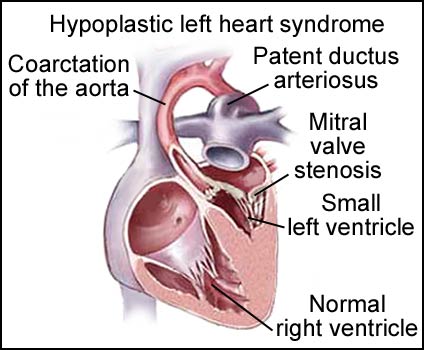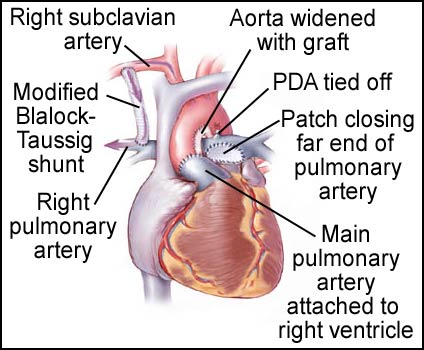
Norwood Procedure
A Norwood procedure is used to correct a type of congenital heart defect called hypoplastic left heart syndrome (see fig. 2). This procedure is usually performed over a series of three operations (see fig. 3): a stage I Norwood procedure, a bidirectional Glenn shunt (or stage II Norwood), and a modified Fontan (or stage III Norwood). A stage I Norwood is shown here. The base of the pulmonary artery is removed and patch is sewn in place where the right and left pulmonary arteries branch. The small aorta is opened from the root (close to the heart) and partially down the descending aorta (behind the heart). A graft (synthetic or from a donor) is sewn to the aorta to widen it. The free end of the pulmonary artery (closest to the heart) is attached to the aortic root. This allows all blood (to the body and lungs) to be pumped through the heart by the functional right ventricle. The patent ductus arteriosus (PDA) is tied off. To allow blood to flow to the lungs a modified Blalock-Taussig shunt is added. This connects the right subclavian artery to the pulmonary artery and allows blood to flow to the lungs. The usually small atrial septal defect will close by itself.
Figure 1: Normal heart.
Figure 2: Heart with hypoplastic left heart syndrome.
Figure 3: Norwood procedure.
Visit Medmovie.com Website for more information.


